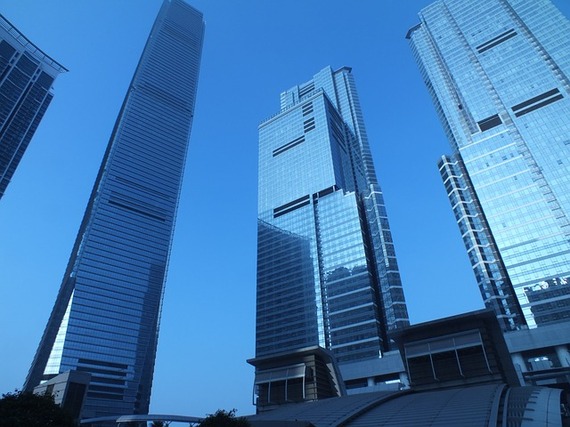Image Source
Keeping your home or business building in the ideal temperature range year-round takes a lot of energy. Maintaining a recommended 78°F in summer (26° Celsius) and
68° in winter (20° Celsius) requires either an enormous amount of heating and cooling or outstanding insulation. Ideally, a combination of smart, energy efficient building technology and HVAC equipment will provide the maximum comfort even in extreme weather.
The general perception of glass is that it is not a good material for maximizing energy-efficiency in buildings. In fact, the average building's windows account for roughly half of the building's yearly heat loss and almost 90% of the building's heat gain. Glass windows, doors, and walls open our inside world to the greater environment around us, bringing light and views. But a reluctance to use glass as a more ubiquitous material in construction certainly lies in its poor energy efficiency.
Before the 1980s the best advice to keep your windows from making your energy bill skyrocket was to use shutters, blinds and shades to reduce direct light/heat transmission. Buildings were retrofitted with dual pane glass replacement; weather stripping and caulking were added to stop costly air leaks. Window tint began to make an appearance and acted to reflect visible light like a mirror, but films created a darkened effect like your room was wearing sunglasses! And who wants to draw the curtains or shut the blinds all the time? The mechanical methods work well but what really is the point of a picture window if you can't see out? Enter the world of ever-advancing energy efficient glass. Consumers demanded advancements for both aesthetic and functional reasons and the engineering community has responded. Science has created a better solution-- low-E (low emissivity) glass.
The rapid development of low-emissivity glasses in the 1990s gave the energy efficient glass movement real momentum. Low-E glass is coated with nanoparticles that block unwanted parts of the light spectrum (infrared=heat), while allowing visible light to pass through. This technology allowed architects to design majestic glass edifices featuring all glass outer walls, which are both beautiful and energy efficient. This ultra-modern looking --and now energy wise-- buildings are beginning to dominate our urban cityscapes. Dramatic custom homes with immense walls of glass can now be designed and built to save energy with this advanced material.
But perhaps the best news of all is that consumers on all levels are enjoying these innovations. As home and building owners renovate, one of their highest returns can be found by replacing glass windows. ENERGY STAR® qualified windows can help reduce your energy bills by 23% on average, depending on where you live. That can really add up over the life of your building and add to resale value. Saving money is great and you can enjoy the knowledge that your efficiency is reducing carbon output too.
What's on the horizon for Low-E glass and other energy saving glass innovations? According to Glass Magazine, "Without question, dynamic glass is the next step in the evolution of energy-efficient glass," This means that in addition to advancing glazing techniques like triple panes with glasses or vacuums between them, glass manufacturers will continue to innovate sexier new ways to keep the view but lose the inefficiency. Electro chromatic glass or "Smart Glass" may soon be in a building near you. This is a Polymer Dispersed Liquid Crystal (PDLC) film sandwiched between two layers of glass and two layers of conductive interlayers. The glass can go from completely transparent to completely opaque in seconds; this transformation is controlled electronically. Advanced features like liquid crystal film are expensive but as use increases, prices will drop.
In the future, all of these advancements will be combined to create extremely energy efficient and transparent windows and glass walls for buildings of all kinds. There is no need to wait until these futuristic windows are on the market and you are ready to make that purchase. For now, the best advice is still to simply upgrade from your old glass. According to Mike Nicklas, business development manager, J.E. Berkowitz LP/Renovate by Berkowitz."There are thousands of aging buildings across the country that still have original, single-pane glass in their windows and curtain walls. ... There are cost effective ways to update a building's original windows and curtain walls to significantly improve their energy, thermal and acoustic performance."
Be sure to move "glass replacement" up to the top of your renovation "to-do" list and take advantage of new glass technology. Then enjoy the view from your new beautiful and energy efficient glass windows and walls knowing that your return on investment includes money savings and less carbon in the environment.

